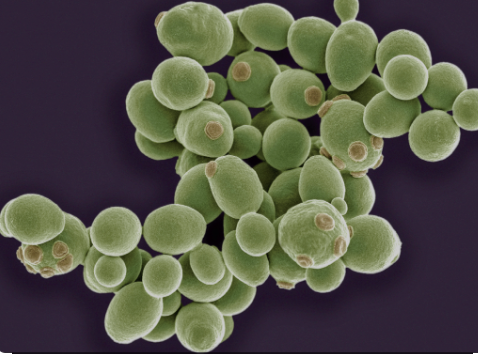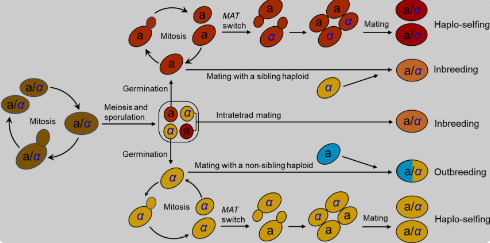Decoding the Yeast Genome: Unveiling the Secrets of Biological Marvel
Introduction :
Yeast, a single-celled organism, has captivated scientists for centuries as a model organism for biological research. Its simplicity and genetic similarity to higher organisms make it an invaluable tool for understanding fundamental biological processes. In recent decades, the mapping and sequencing of the yeast genome have revolutionized our understanding of genetics and molecular biology. In this blog post, we will delve into the fascinating world of yeast genomics, exploring the importance of the yeast genome, its structure, and the insights it provides into the complexities of life.

- The Significance of Yeast in Biological Research :
Yeast, scientifically known as Saccharomyces cerevisiae, has been a cornerstone of biological research for several reasons. First and foremost, yeast is a eukaryotic organism, sharing many genetic and cellular characteristics with higher organisms, including humans. This genetic similarity makes yeast an excellent model organism to study fundamental cellular processes, such as cell division, metabolism, and gene regulation.
Additionally, yeast is a simple organism with a short life cycle, allowing for rapid experimentation and observations. Its single-cell nature enables researchers to study individual cells and observe their behavior under different conditions. Yeast can also be easily manipulated genetically, enabling scientists to introduce specific mutations or modifications and observe the effects on cellular processes.
Furthermore, yeast is used extensively in the biotechnology industry. It has been harnessed for the production of various compounds, including pharmaceuticals, biofuels, and industrial enzymes. Understanding the yeast genome and its biological pathways is crucial for optimizing these processes and developing new applications.
- Decoding the Yeast Genome :
The yeast genome refers to the complete set of genetic material present in yeast cells. The genome contains all the instructions necessary for the organism’s development, growth, and functioning. The mapping and sequencing of the yeast genome have provided invaluable insights into its structure and organization.
The genome of Saccharomyces cerevisiae consists of approximately 12 million base pairs, encoding around 6,000 genes. These genes determine the characteristics and functions of the organism. The yeast genome is organized into 16 chromosomes, which are linear pieces of DNA. Each chromosome contains specific regions, including centromeres, telomeres, and origins of replication, which are essential for proper DNA replication and cell division.
The sequencing of the monumental task that required advanced techniques and technologies. The completion of the project in 1996 provided scientists with a blueprint of the organism’s genetic makeup. Since then, ongoing efforts have focused on refining the sequence and understanding the functions of individual genes.
- Insights from the Yeast Genome :
It has yielded remarkable insights into fundamental biological processes. By studying the yeast genome, scientists have uncovered key mechanisms of gene regulation, DNA replication, cell cycle control, and protein synthesis.
One of the groundbreaking discoveries from yeast genomics is the identification of essential genes. These are genes that are critical for the survival and functioning of the organism. Understanding the role of essential genes in yeast provides valuable insights into the functions of corresponding genes in more complex organisms.
The yeast genome has also shed light on the intricate networks of gene regulation. Through the identification of transcription factors, enhancers, and repressors, scientists have unraveled the mechanisms by which genes are switched on or off in response to various environmental cues and cellular conditions.
Furthermore, the yeast genome has been instrumental in unraveling the intricacies of cell cycle control. By studying the genes involved in cell division and DNA replication, researchers have gained a deeper understanding of the regulatory mechanisms that ensure accurate and timely cell division.
Additionally, the yeast genome has provided insights into the process of protein synthesis. By identifying genes involved in protein synthesis and studying their regulation, scientists have uncovered the complex machinery responsible for producing functional proteins.

- Future Implications and Applications :
The knowledge gained from studying the yeast genome has far-reaching implications for various fields of biology and beyond. It has paved the way for advancements in genetic engineering, synthetic biology, drug discovery, and personalized medicine.
The understanding of gene regulation and cellular processes obtained from yeast genomics has facilitated the development of genetic engineering techniques. Yeast can be engineered to produce valuable compounds, such as therapeutic proteins and biofuels, by introducing specific genes or modifying existing ones. The knowledge gained from the yeast genome has also contributed to the development of gene-editing technologies like CRISPR-Cas9, which have revolutionized genetic research and hold immense potential for various applications.
In drug discovery, the yeast genome serves as a valuable resource for identifying potential drug targets and understanding drug interactions. Yeast can be used to study the effects of drugs on cellular processes and identify genes involved in disease pathways. This knowledge can aid in the development of new therapeutic strategies and personalized medicine approaches.
Furthermore, yeast genomics has opened new avenues for synthetic biology, which involves engineering organisms to perform new functions. By manipulating the yeast genome, scientists cancreate novel biosensors, metabolic pathways, and cellular circuits for various applications, including environmental monitoring, biofuel production, and bioremediation.
Conclusion :
The yeast genome has revolutionized our understanding of biology by providing insights into fundamental cellular processes and genetic regulation. Its simplicity, genetic similarity to higher organisms, and application in biotechnology make it an invaluable model organism for scientific research. The knowledge gained from studying the yeast genome has implications for genetic engineering, drug discovery, personalized medicine, and synthetic biology. As technology continues to advance, further exploration of the yeast genome promises to unlock even more secrets and fuel new discoveries in the field of biology.
